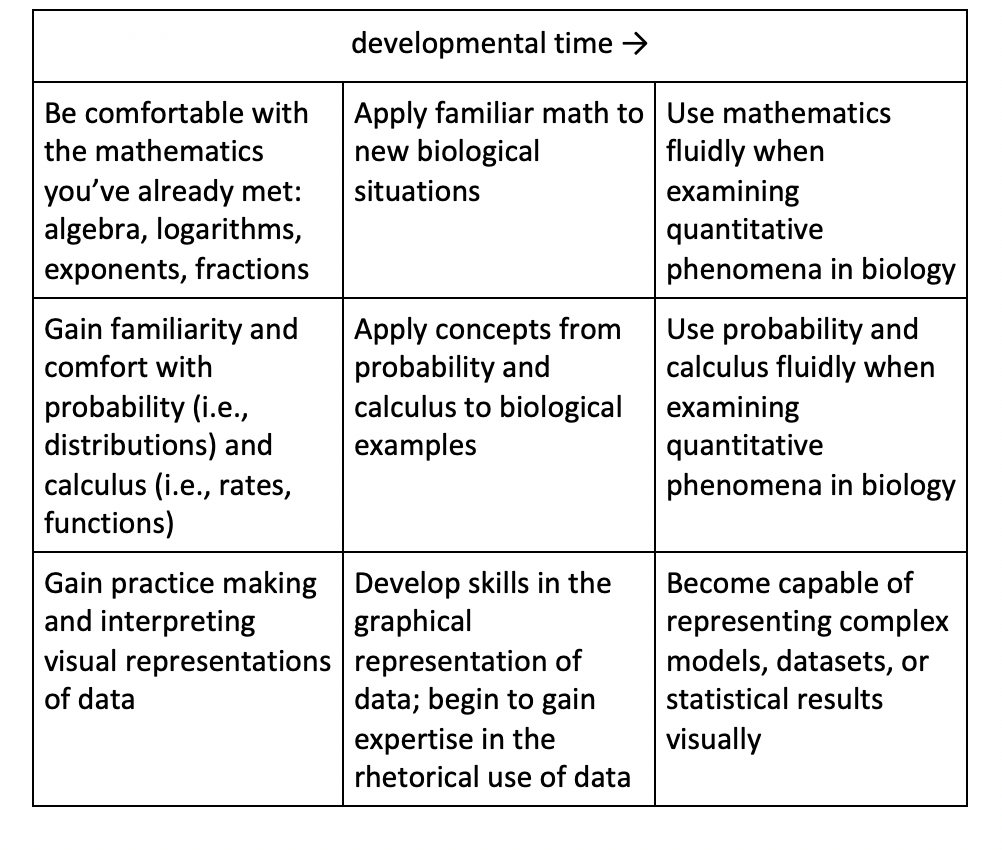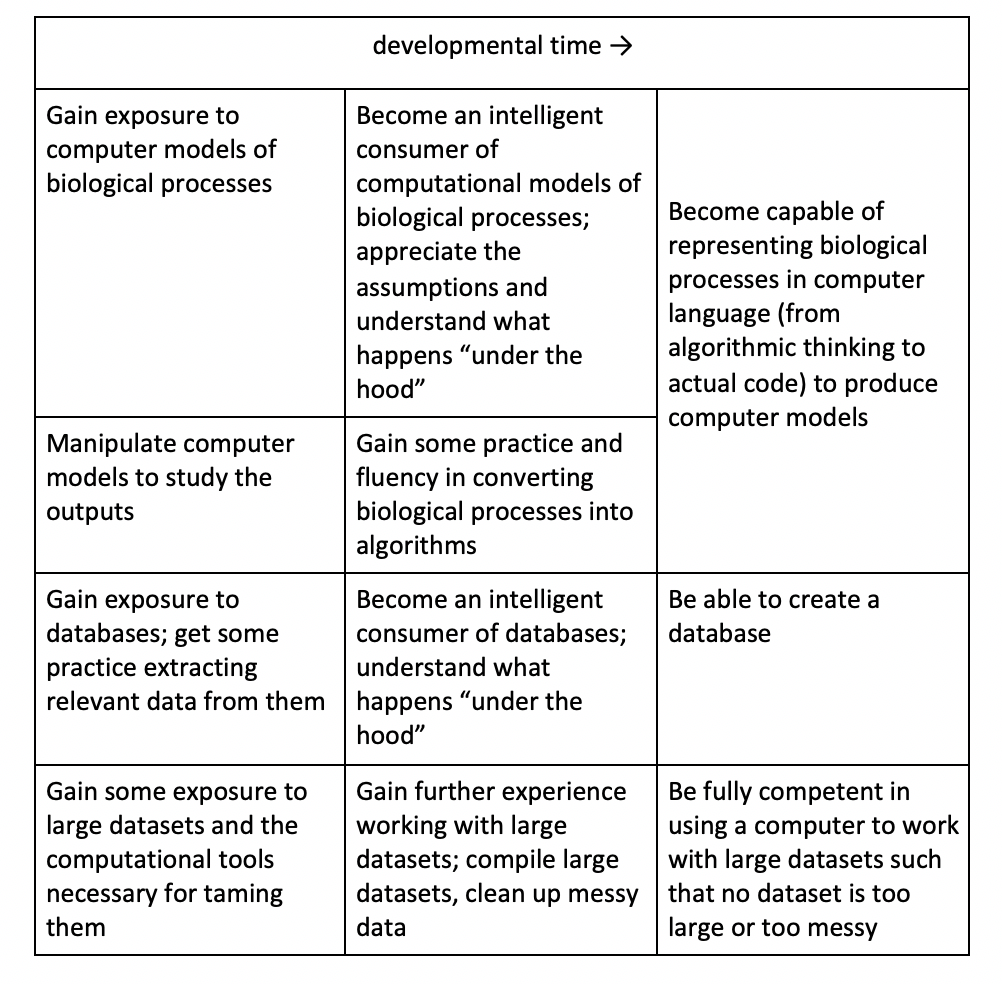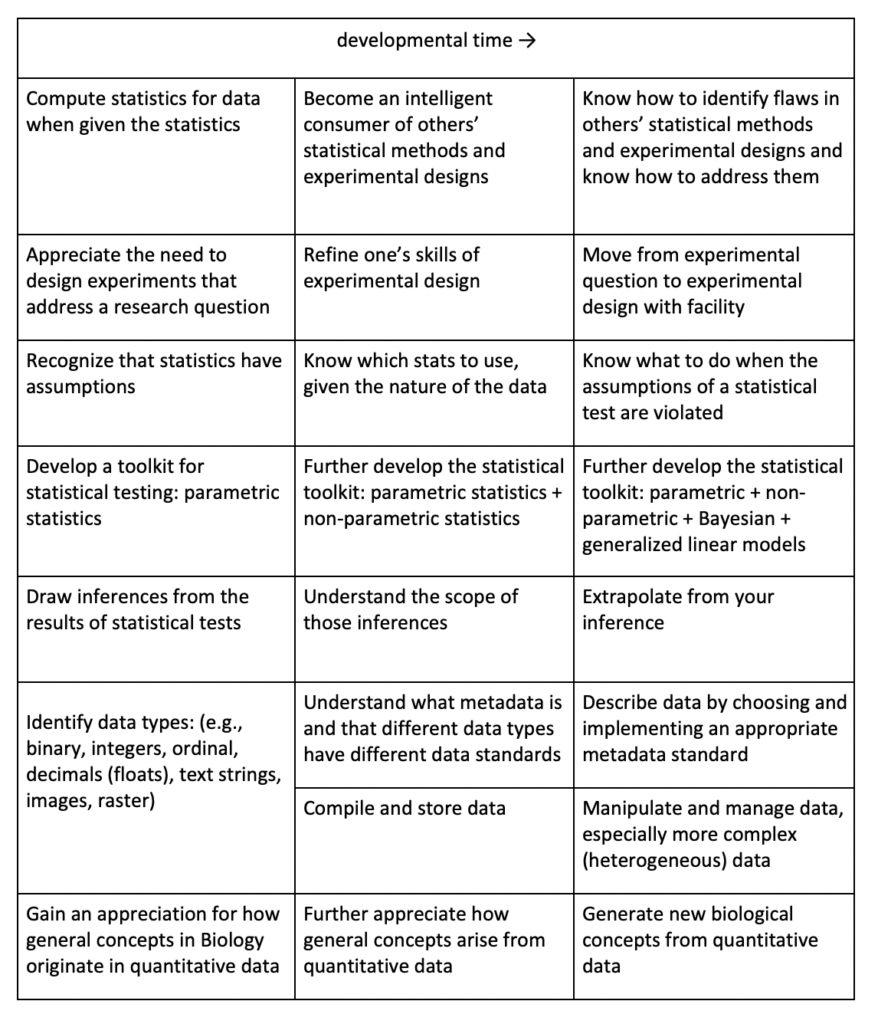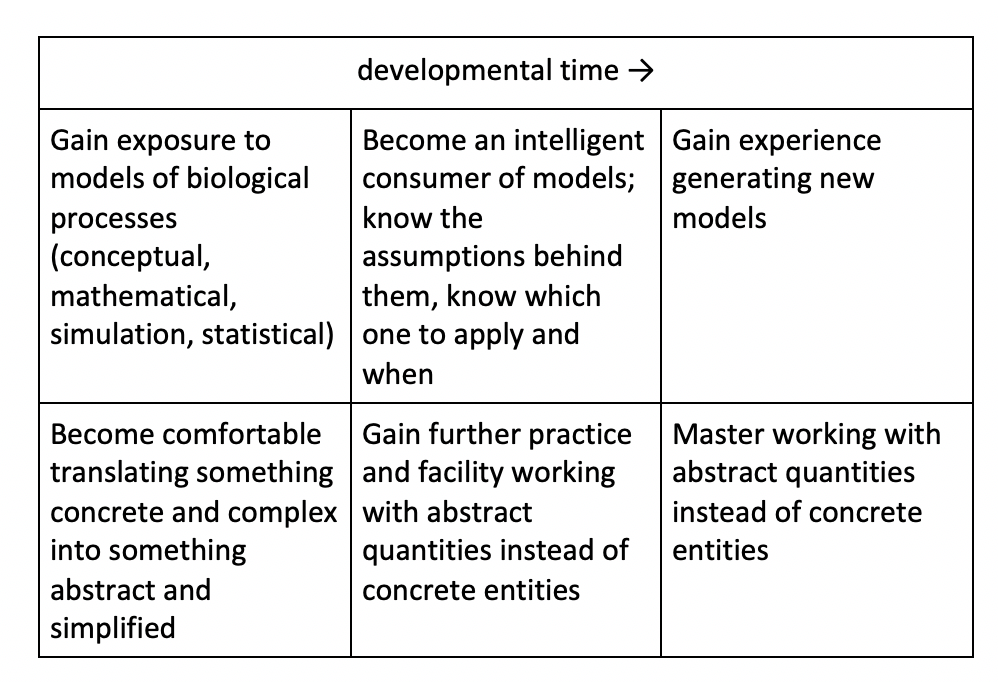Integrated Quantitation
Quantitative Reasoning In The Discipline (or, QuID)
Today’s biologist must have general competence in and facility with quantitative reasoning. As a department we value the development of this competence and consider it one of the major goals of our curriculum. For us, competence in quantitative reasoning comprises the following:
- Facility with making inferences inductively and deductively
- Ability to analyze data—small datasets and large datasets alike—with ease
- Ability to test hypotheses and extract patterns from quantitative data
- Fluency in the visual representation of quantitative results and ideas
- Eloquence in the discussion of quantitative results and ideas
- Appreciation for the scale on which biological phenomena operate
- The habit of grounding one’s understanding of biology—predictions, inferences, description—in quantitative terms
General competence in quantitative reasoning depends on developing competencies in a number of areas that we target for instruction.
The Four Competencies
We identify the following learning goals for students in four competencies. A given course may target any number of these goals for introduction, practice, or mastery. It may therefore take all four years for a student to fully realize these goals.
I. Basic Skills of Numeracy, Calculation, and Visualization
Owing to their fundamental importance in quantitative reasoning, a student should be able to:
- use algebra, fractions, exponents, logarithms, and basic arithmetic
- think in terms of distributions (probability) and rates (calculus)
- interpret data from graphical representations and be able to represent data visually
- appreciate scale and work flexibly with approximate numerical quantities
II. Computation
A student should be able to:
- represent biological phenomena with computational (algorithmic) models
- experiment with computer models to understand biological phenomena
- work with large datasets in a computational environment
- understand how a database works and extract useful information from databases
- communicate about the process and results of computation
III. Statistics and Data Analysis
A student should be able to:
- design experiments and analyses that are informed by statistical tests
- integrate and interrogate data using descriptive and inferential statistics
- apply the appropriate statistic to data
- draw specific conclusions and general understanding of biological concepts from data
- frame statistical results in accessible language
IV. Modeling and Abstraction
A student should be able to:
- rely on models to generate understanding of biology
- derive and test predictions from conceptual, mathematical, simulation, and statistical models
- develop one’s own models of biological processes
- translate between the language of models and everyday language
A Plan for QuID Instruction
For all four competencies, we build toward expertise and mastery, from which general competence in quantitative reasoning will emerge. The developmental trajectory takes one of a few general forms for many of the goals within these competencies. One form is for a topic to be introduced in the first stages, then practiced with feedback (reinforced) at a second stage, then mastered by the third stage. Another is for a tool (e.g., a model or a statistical test) to be chosen for the student in the first stage, then to have the student become an intelligent consumer of these sorts of tools in the second stage, then for the student to proceed to the creation of new tools in the third stage. Before graduation, we want every student to reach the second stage for every goal; a few students will proceed to the third stage for some of these goals.
I. Expectations for how the Numeracy/Calculation/Visualization competency develops:

II. Expectations for how the Computation competency develops:

III. Expectations for how the Statistics and Data Analysis competency develops:

IV. Expectations for how the Modeling and Abstraction competency develops:
